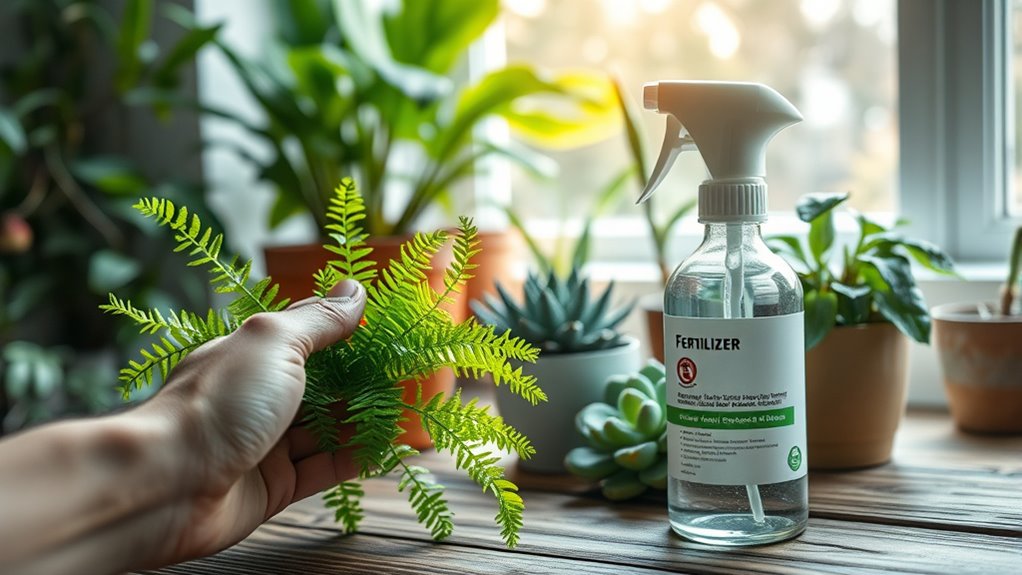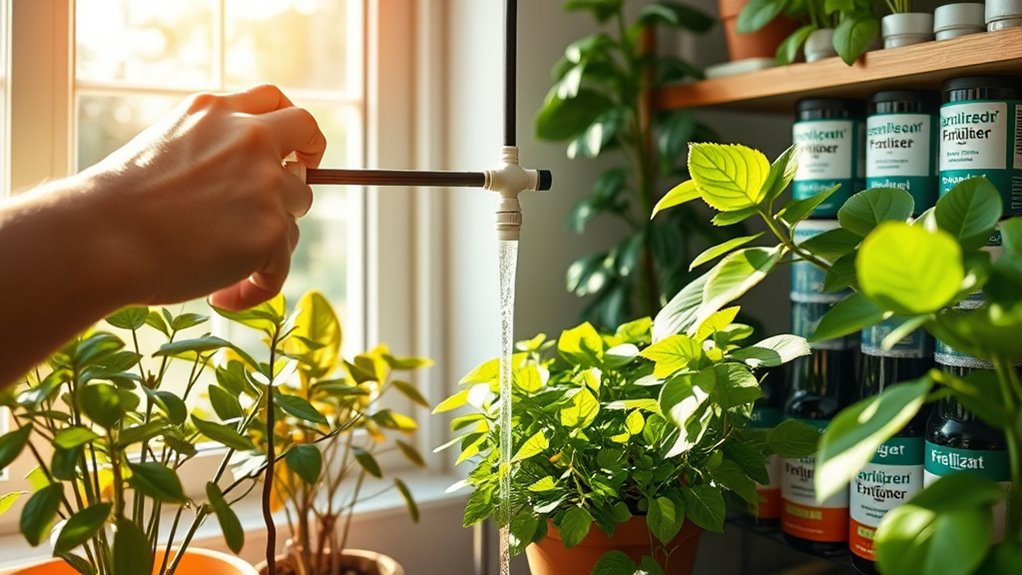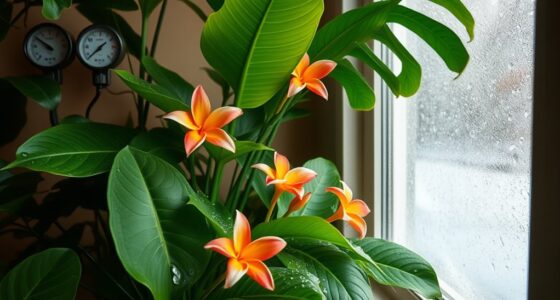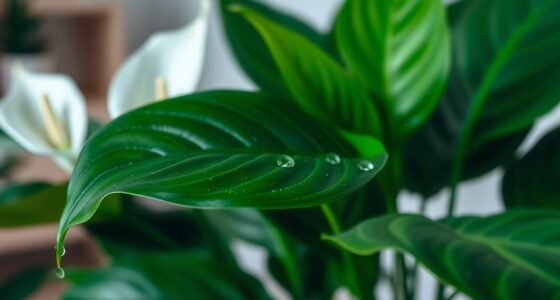In summer, you should fertilize your indoor plants more often because they’re actively growing and need extra nutrients for healthy foliage and roots. During dormancy in winter, cut back on feeding since their metabolic activity slows down, and overfeeding can harm them. Adjusting your fertilization schedule helps prevent stress and nutrient imbalances. To keep your plants thriving year-round, understanding these seasonal changes is essential; keep going to discover more helpful tips.
Key Takeaways
- Increase fertilization frequency during summer to support active growth; reduce it in winter to prevent overfeeding.
- Use diluted or less frequent fertilization in dormant seasons to match lower metabolic activity.
- Avoid overfertilizing in winter to prevent root damage and nutrient imbalances.
- Adjust fertilization techniques seasonally to maintain healthy foliage and robust roots.
- Proper seasonal fertilization promotes plant vitality, resilience, and overall indoor garden health year-round.

During the summer months, indoor plants generally require more frequent fertilization to support their active growth phase, whereas in dormant seasons like winter, their nutrient needs decrease significantly. It is important to reduce fertilization during dormancy to prevent overfeeding and potential damage to the plants. Proper fertilization not only promotes healthy growth but also enhances the overall vitality of indoor plants. Utilizing vetted fertilization techniques ensures a balanced nutrient intake tailored to seasonal changes.
Frequently Asked Questions
How Often Should I Fertilize Indoor Plants During Summer?
You should fertilize your indoor plants every 2-4 weeks during summer. Since watering frequency increases and they receive more light, plants absorb nutrients faster. Make sure to dilute the fertilizer to avoid overfeeding. Keep an eye on their growth and adjust accordingly. Proper fertilization supports healthy foliage and flowering, aligning with their increased energy needs in the summer months.
What Signs Indicate Over-Fertilization in Indoor Plants?
If you notice nutrient toxicity or leaf discoloration, your indoor plants might be over-fertilized. Look for yellowing or browning leaves, especially at the edges, which can indicate excess nutrients. You may also see stunted growth or a crusty residue on the soil surface. These signs suggest you should cut back on fertilization and flush the soil with water to remove excess salts, helping your plants recover.
Are There Specific Fertilizers Better Suited for Summer Growth?
Did you know that during summer, plants absorb up to 50% more nutrients? For this reason, you should choose fertilizers with a balanced fertilizer composition tailored to meet indoor plants’ increased plant nutrient needs. Opt for liquid or water-soluble fertilizers with higher nitrogen content, which promote lush growth. Always follow label instructions to avoid over-fertilizing and make certain your indoor garden thrives through the season.
How Do I Adjust Fertilization When Moving Plants Outdoors Temporarily?
When moving your indoor plants outdoors temporarily, you should adjust fertilization by considering seasonal nutrient shifts and outdoor shift tips. Increase fertilizer strength gradually to support growth and exposure to natural sunlight. Use a balanced, water-soluble fertilizer every 2-4 weeks, and monitor plant response. Remember to reduce feeding as days shorten and temperatures drop to prevent over-fertilization, ensuring your plants adapt smoothly to their new environment.
Can Dormant Season Fertilization Harm Indoor Plants?
You’re wondering if fertilization harm can occur during the dormant season for indoor plants. Generally, fertilizing in dormancy isn’t necessary and can cause harm, such as root burn or nutrient buildup, which stresses your plants. During this period, their growth slows down, so they don’t need extra nutrients. To keep them healthy, avoid fertilization harm by skipping or reducing feedings until active growth resumes.
Conclusion
So, while you might think your indoor plants are fine with the same fertilization year-round, summer’s growth spurt and winter’s rest prove otherwise. Ironically, giving them less or more fertilizer at the right times can keep them thriving, while overdoing it or neglecting their needs can cause more harm than good. Stay attentive, adjust seasonally, and enjoy lush, healthy plants—who knew that a little planning could make such a difference?










